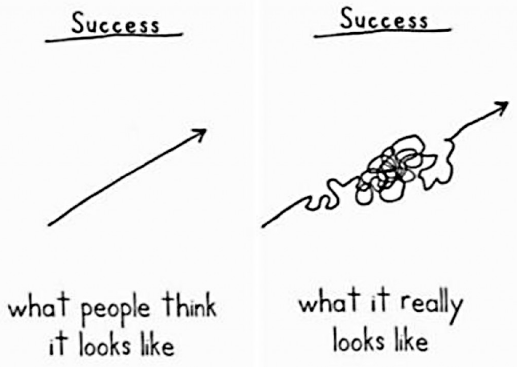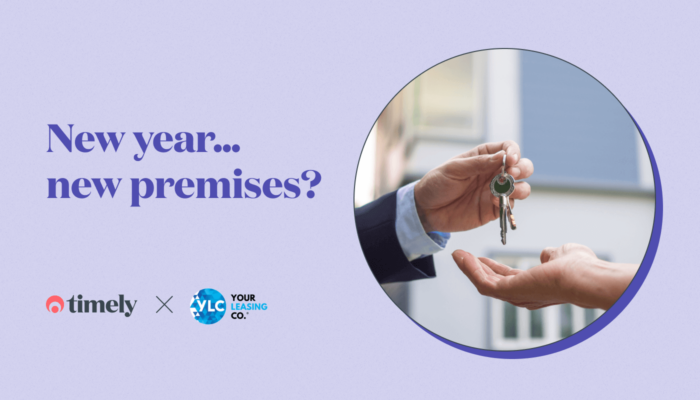Here January, gone February: how to make the most of fitness client resolutions
January is always a great time of year for fitness professionals — our class numbers spike as a flurry of new clients sign up for personal training sessions and exercise classes. New year, new you, right?

All too often, February or March rolls around and the resolutioners slowly stop showing up. And whether or not that’s because of anything you’re doing, it can still be very frustrating! There’s no magic cure, but there are some simple things you can do to prevent those diminished numbers, and help your clients stick around.
The usual pattern
First of all, know that’s it’s not just you! It happens to most gym facilities worldwide, so don’t feel disheartened.
People start the year rearing to go, with new goals in mind. Then they get caught in the rat race, and start to lose their fire.
Members start missing a session here and there, and then soon they’re skipping weeks at a time.
There’s no ‘one size fits all’ mentality when it comes to fitness. As long as you know you’re doing your best by your clients, don’t take it personally if they don’t keep a New Year’s resolution.
How to help clients get over the line
Understand your client’s lifestyle
Before planning a new programme with your client, try to understand their lifestyle.
Is your client a student with plenty of spare time in the day? Or are they a CEO of a busy company who is pushed for time?
Everyone’s lifestyle is different, but this doesn’t mean your client cannot achieve their goals. Instead, you need to show your client how to create training programmes that fit around their lifestyle – and make them understand why they’ve approached you in the first place.
The more your client has to change their life to accommodate a new habit, the less likely the changes will stick.
Determine what their fitness history has been like to date. Discuss any barriers they may have faced, and ways that you can help them overcome each one. Sometimes the easiest solutions are ones they have not even considered.
Create SMART goals
Help your client create SMART goals.
These goals are:
Specific
Measurable
Achievable
Realistic
Time-based
Don’t just let your client say that want to lose weight – help them understand and know why they want to. What other elements of their life do they want to take back? A vague goal of “losing weight” is a recipe for failure.
Avoid supporting resolutions that are too big, or too vague. It’s your job to help your client to understand that taking small, realistic, steps is the best way to succeed.
It’s important that your client is actively involved in creating this plan. It should feel as though they own this plan, and the goals they’re looking to achieve.
Talk about exercise makes people feel
What are the benefits of exercise? If it’s just losing weight, then what happens when your client has lost that 5kg from the holidays? If they’re purely focussed on the scales, or bulking up, how do we encourage our clients to continue exercising?
“Remember: results aren’t always physical. How much better do you feel today?”
Ask your client to consider how exercise is making them feel. See if they can identify benefits that they’re seeing in other areas of their life.
Hopefully, your client will find benefits that they never knew existed, or they never knew they needed at the start of their journey – and these may become the new driving forces behind their exercise routine.
These benefits could be:
- Less stressed
- Increased endorphins
- Deeper sleep
- Better mood
- Improved self-confidence
- More energy
Remind your clients how multi-dimensional exercise is. If you’re talking about exercise and fitness as part of a full, well-rounded life, instead of something with a single purpose, your clients will appreciate it more.
Help your clients find resolutions and goals that truly inspire them – and that go beyond simply weight loss or muscle definition.
Make training fun, and varied
Unlike us fitness junkies, not everyone finds exercise fun. So, look for alternative ways to speak to your clients.
Do they like game-based workouts? Perhaps they’re outdoorsy folk. Try new things and gauge their response, and establish what environment your client works best in.
But remember, you can’t please everyone. If you have a style or method that you swear by, and your client doesn’t understand – that’s OK! But work hard to meet your client in the middle, and find creative ways to inspire those who don’t enjoy exercise as much as others (especially when they’re just starting out).
Create deals and incentives
Creating deals and incentives is a great way to give people that extra push they may need to get to your facility – and stay there.
- February/March deals
The options are endless! You want to create a deal that’s enticing for clients, but that isn’t going to leave you out of pocket. Offering discounts on concession cards is a great way to give your business a financial boost at the start of the year, as well as lock clients in for 10-20 sessions. Once you help a client build a habit, they’re much more likely to stick with you.
- Competitions
Competitions are a fun way to get people excited and involved in your classes. February or March is a great time to run a competition to keep your clients’ newfound enthusiasm from flagging. You could offer a prize for those who get to the most classes within a month, or an ‘entry’ every time they may make it along.
This is where you can create a co-marketing campaign with another local business. Reward attendance with prizes, and you’ll not only get more enthusiastic clients, you’ll have boosted your brand and helped another business.
- Encourage clients to involve friends
We all know that having support is a vital part of achieving our goals. Encourage new members or clients to work out with a friend, relative or even a co-worker.
If a client is interested in investing in a PT, it’s usually more affordable to share the cost with a friend. Plus, when clients exercise with friends they hold each other accountable – they’re less likely to pull out as they don’t want to let each other down. That takes some of the responsibility away from you, too.
Working out with friends or colleagues can be less intimidating and more fun. Why not try out a ‘bring a friend for free’ deal through February? This may just help your clients keep up the good habits.
Help your client celebrate small wins
Often your client will obsess over the endgame. As a PT it’s your job to, instead, help them to recognise and celebrate the small wins they are making along the way. Don’t let your clients be discouraged when progress plateaus.
Reaching goals never follows a steady trajectory – they tend to undulate.

This may feel off-putting to your client, but it’s totally normal. Comedian Demetri Martin illustrated it pretty perfectly, in fact.
Did they get through a workout they were dreading? Praise them! Make sure they know that they should feel fantastic for achieving that.
The new year is a great time to get new faces through the door of your fitness facility – but it’s up to you to help those new clients turn those New Year’s resolutions into lifetime fitness resolutions. Don’t let someone’s resolutions pass by because you didn’t take the time to help, educate and motivate your newcomers.
Do remember that one size does not fit all when it comes to training clients. If your newbies decide to leave, the most you can do is make 100% sure that you’ve given as many tools towards health and fitness as you can. The rest is up to them!
Ultimately your job is to help people fall in love with exercise and be intrinsically motivated to live well. But everyone learns differently, and we all have a different coaching and teaching method.
Stick to your guns, be perceptive – but don’t be disheartened if you cannot keep them all.


